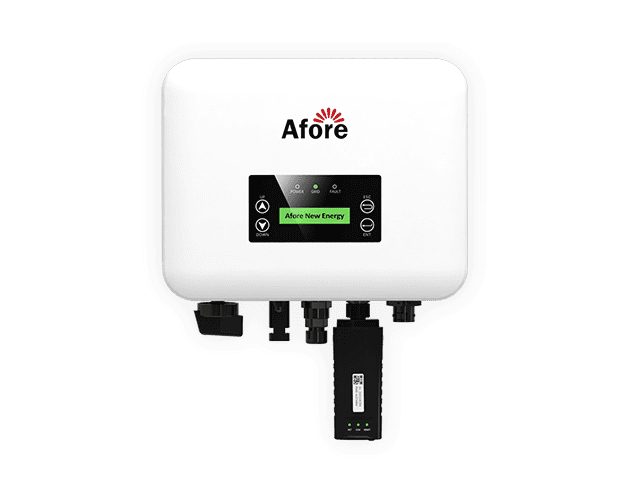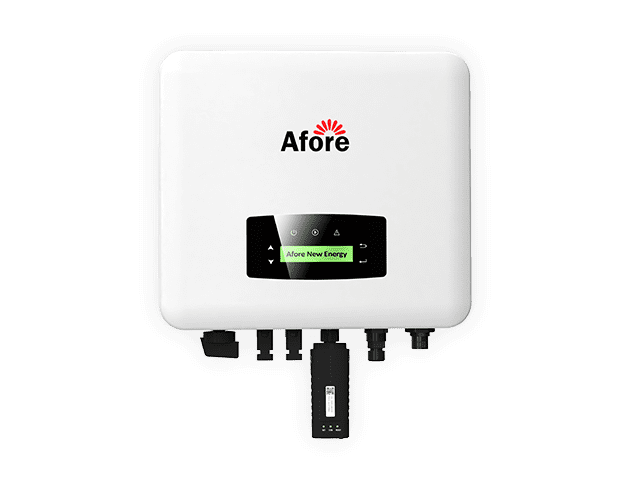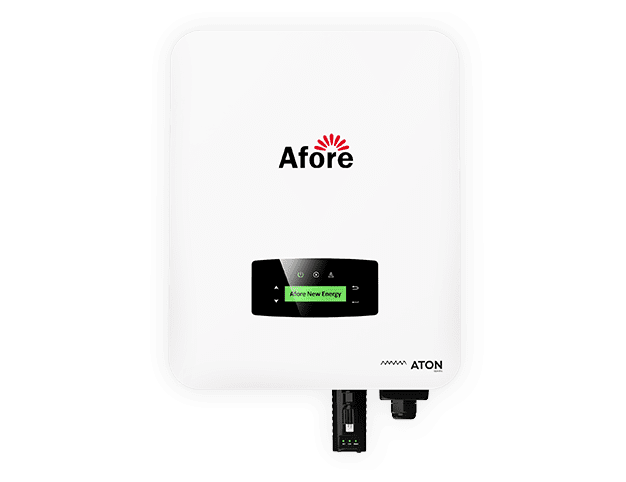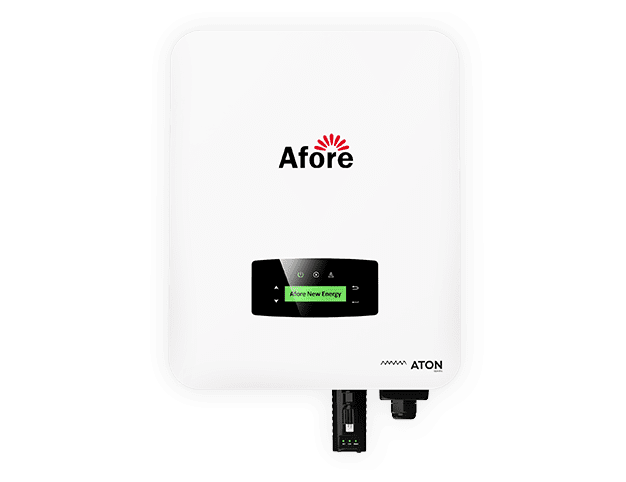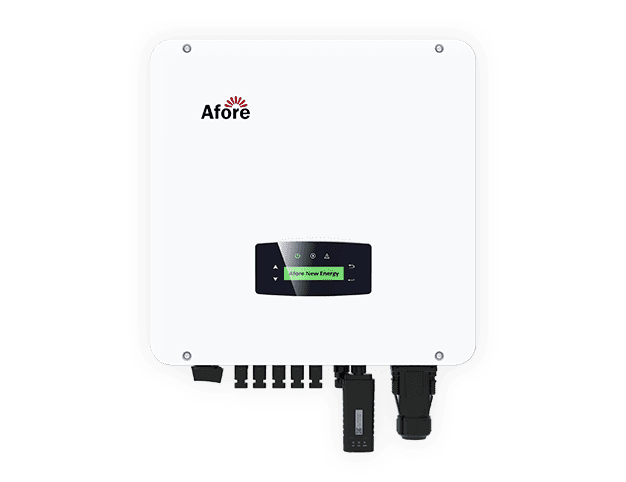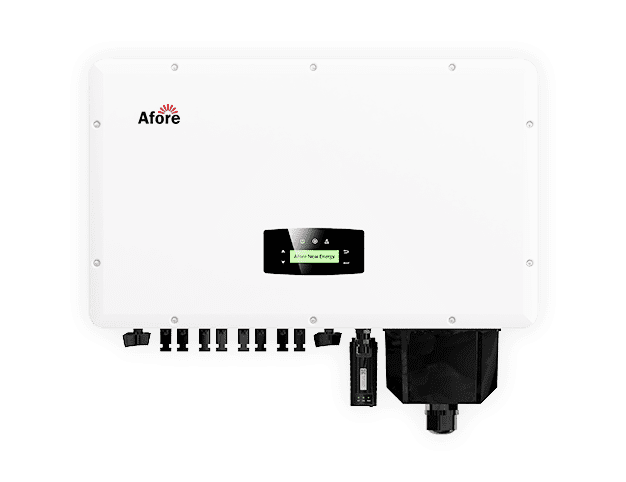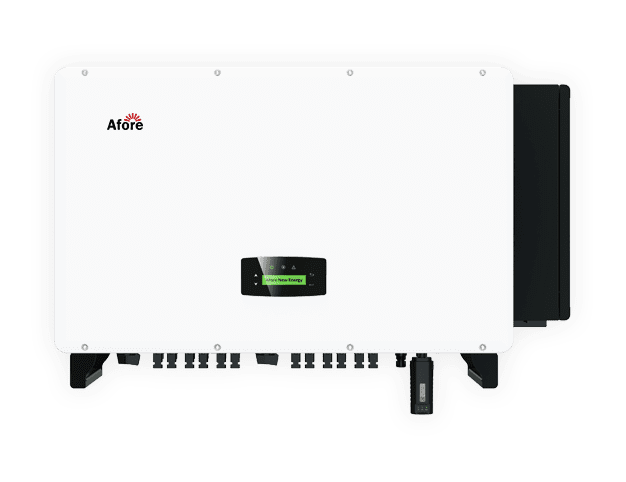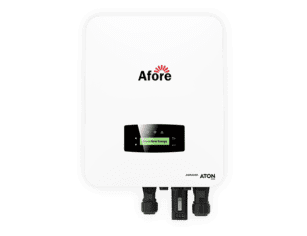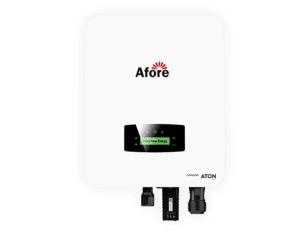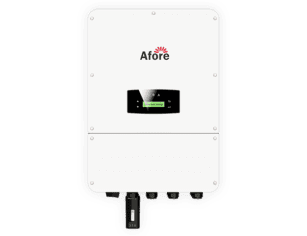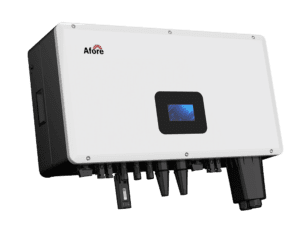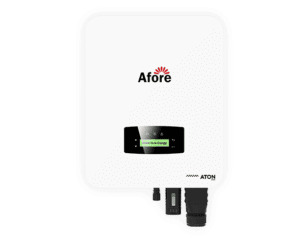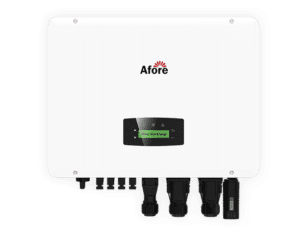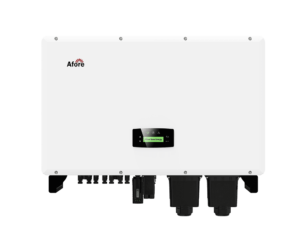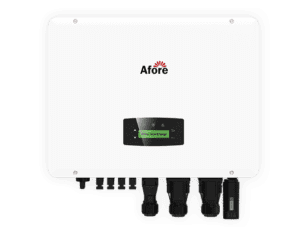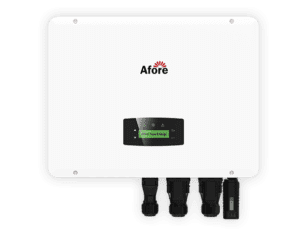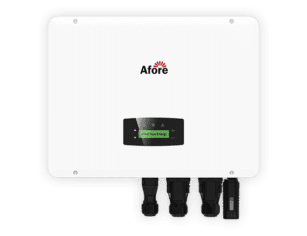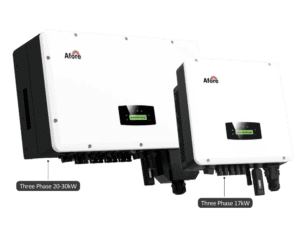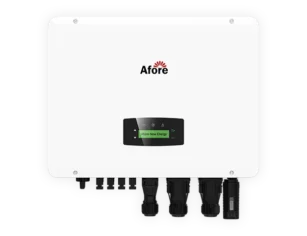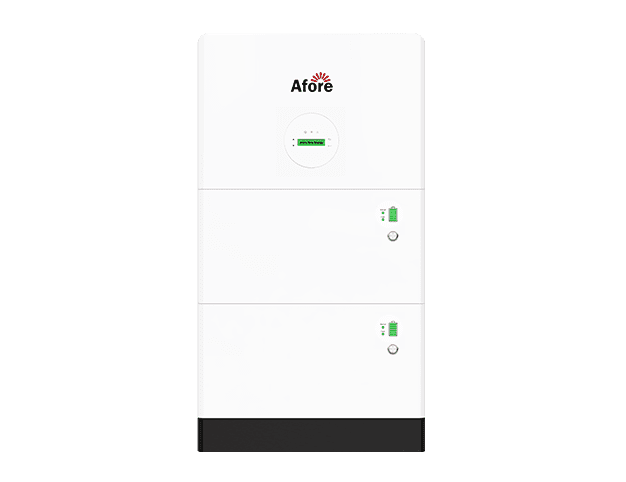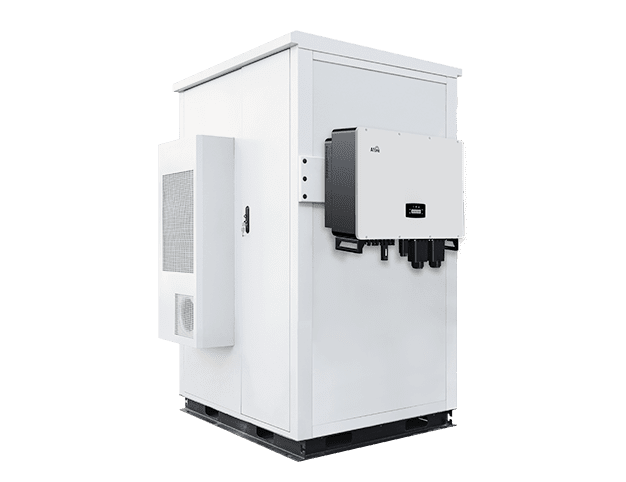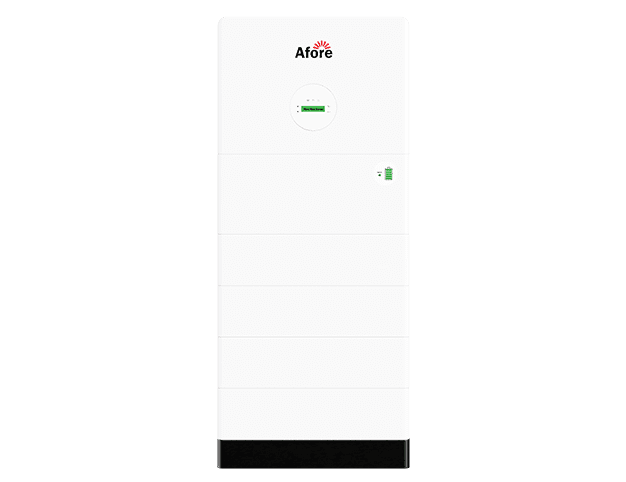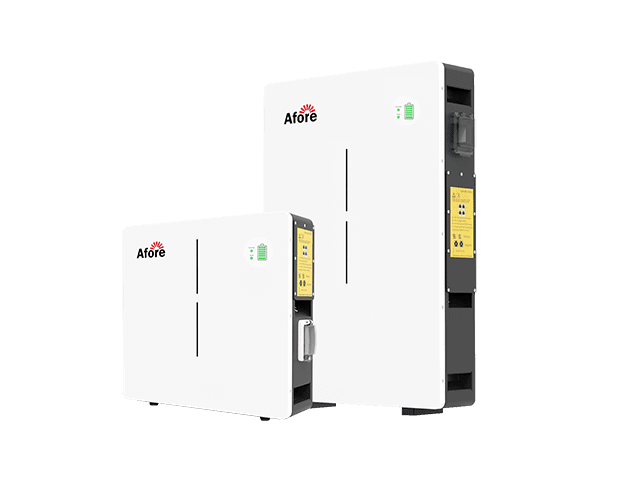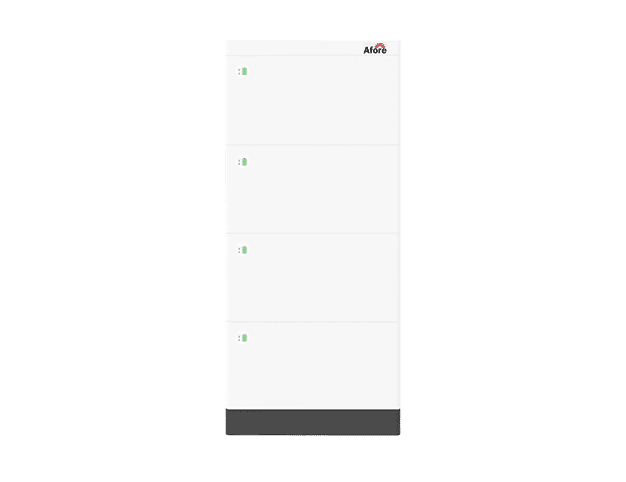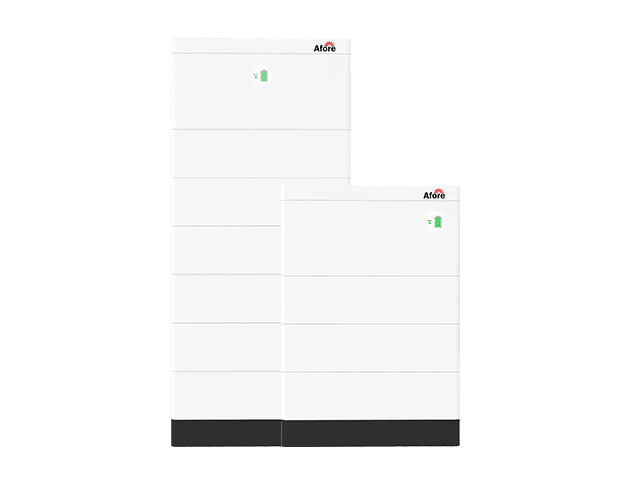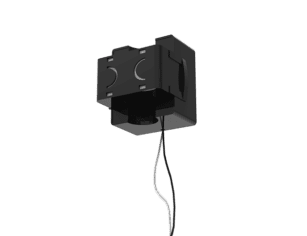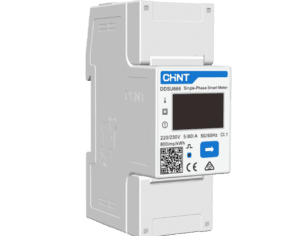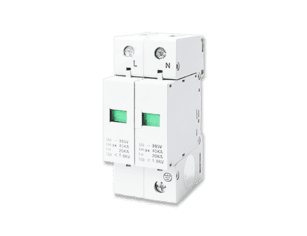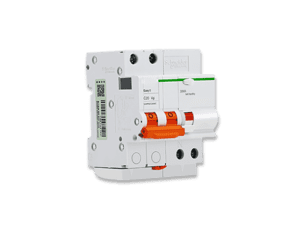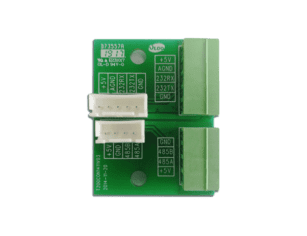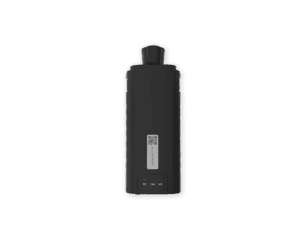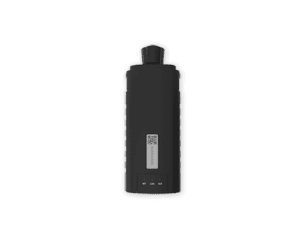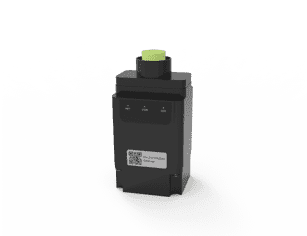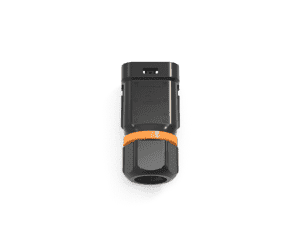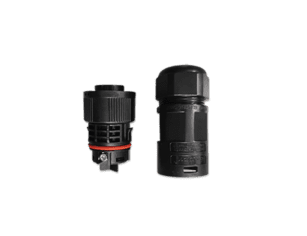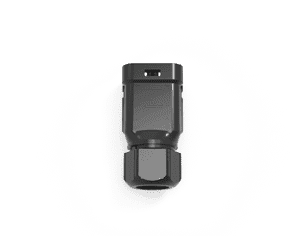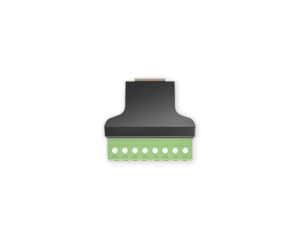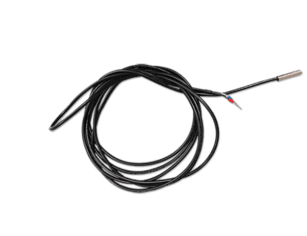Kompletny przewodnik po falownikach energii słonecznej: Wszystko, co musisz wiedzieć
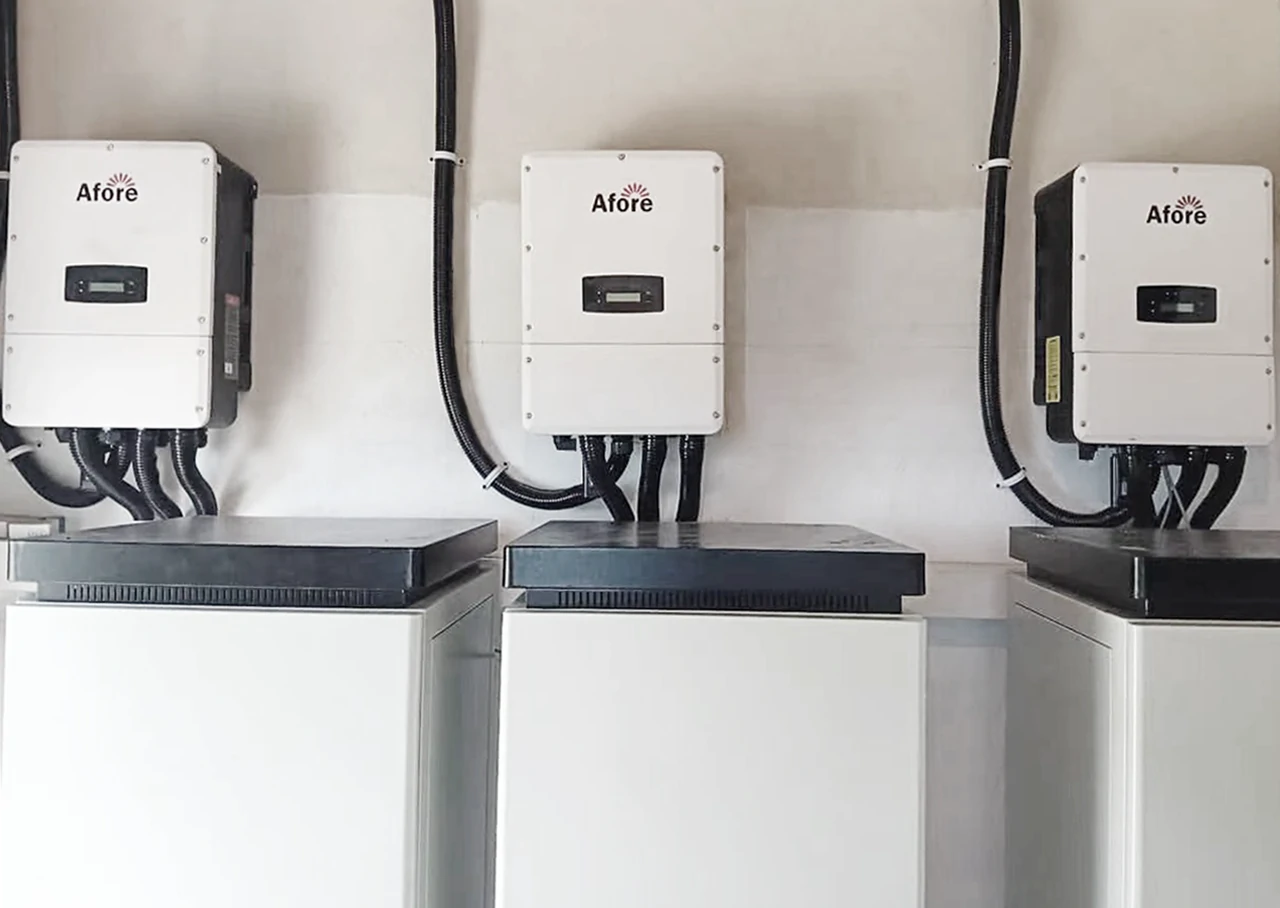
Spis treści
Inwerter energii słonecznej jest podstawowym urządzeniem w systemie energii słonecznej. Przetwarza on prąd stały (DC) z paneli słonecznych na prąd przemienny (AC), standardową energię elektryczną wykorzystywaną w naszych domach, firmach i samochodach. Bez falownika energia elektryczna generowana przez panele słoneczne nie byłaby użyteczna w większości miejsc!
Znaczenie falowników w systemach energii słonecznej
Inwerter energii słonecznej jest bardzo ważną częścią systemu energii słonecznej! Jest jak pomost między prądem stałym (DC) generowanym przez panele słoneczne a prądem zmiennym (AC) używanym w domu, w pracy i w naszych samochodach. Pomyśl o tym, że bez tego falownika większość energii generowanej przez panele słoneczne nie byłaby wykorzystywana, a użyteczność i efektywność energii słonecznej jako odnawialnego źródła energii byłaby ograniczona.
Inwerter energii słonecznej ma niesamowitą funkcję, która zamienia prąd stały z paneli słonecznych w prąd przemienny. Dlaczego panele słoneczne wysyłają prąd stały? Wynika to z natury ogniw fotowoltaicznych, które umożliwiają stały przepływ elektronów w jednym kierunku. Problem polega jednak na tym, że urządzenia w naszych domach i system sieciowy wykorzystują prąd przemienny (AC), który okresowo zmienia kierunek. To duża różnica, a bez inwertera nie ma możliwości wykorzystania energii elektrycznej generowanej przez inwertery energii słonecznej do bezpośredniego zasilania urządzeń, ładowania akumulatorów lub przesyłania nadmiaru energii elektrycznej z powrotem do sieci. W tym miejscu przydaje się inwerter energii słonecznej, który przekształca energię w użyteczną formę.
Ponadto sprawność i niezawodność falownika solarnego ma bezpośredni wpływ na ogólną wydajność systemu solarnego. W przypadku dobrej jakości inwertera energii słonecznej, proces konwersji energii jest dobrze zoptymalizowany, aby zminimalizować straty i zmaksymalizować dostępną moc. Jest to ważne zarówno w przypadku domowych, jak i komercyjnych systemów solarnych. Wynika to z faktu, że maksymalizacja mocy wyjściowej energii może pomóc zaoszczędzić dużo pieniędzy, a także zmniejszyć emisję dwutlenku węgla i środowisko. Poza tym, niezawodny inwerter energii słonecznej zapewni stabilną pracę systemu i zmniejszy ryzyko awarii i napraw.

Jak działają falowniki energii słonecznej
Zrozumienie działania inwertera energii słonecznej jest niezbędne dla każdego, kto chce efektywnie wykorzystać moc energii słonecznej.
Proces ten rozpoczyna się od paneli słonecznych, które pochłaniają światło słoneczne i przekształcają je w prąd stały (DC) poprzez efekt fotowoltaiczny. Jednak ta energia prądu stałego nie jest wykorzystywana przez urządzenia w naszych domach ani przez system sieciowy, ponieważ wszystkie one wykorzystują energię prądu przemiennego. W tym miejscu do gry wkraczają inwertery energii słonecznej. Główną funkcją inwertera energii słonecznej jest pobieranie prądu stałego z paneli słonecznych i przekształcanie go w czysty, użyteczny prąd przemienny.
Proces konwersji w falowniku energii słonecznej obejmuje kilka kluczowych etapów. Po pierwsze, prąd stały z falownika solarnego jest doprowadzany do wejścia falownika. Następnie falownik wykorzystuje szereg elementów elektronicznych (takich jak kondensatory i cewki indukcyjne) w celu wygładzenia przebiegu prądu stałego i przygotowania go do konwersji. Następnie falownik wykorzystuje szybkie urządzenie przełączające, zazwyczaj tranzystor bipolarny z izolowaną bramką (IGBT), do szybkiego włączania i wyłączania wejścia prądu stałego z bardzo wysoką częstotliwością. To działanie przełączające generuje impulsowy sygnał DC.
Impulsowy sygnał DC jest następnie przepuszczany przez transformator, który podnosi lub obniża napięcie w zależności od potrzeb, aby dopasować je do żądanego napięcia wyjściowego AC. Co więcej, transformator oddziela wejście DC od wyjścia AC, co stanowi dodatkową warstwę bezpieczeństwa. Po przejściu przez transformator, impulsowy sygnał DC musi zostać przefiltrowany przez dodatkowe kondensatory i cewki. W ten sposób wszystkie pozostałe harmoniczne są usuwane, a na wyjściu otrzymujemy gładką sinusoidę AC.
Kluczowym aspektem falownika solarnego jest jego zdolność do wytwarzania czystej fali sinusoidalnej prądu przemiennego. Głównie fala sinusoidalna, która jest bardzo podobna do prądu przemiennego dostarczanego przez przedsiębiorstwa użyteczności publicznej, zapewnia kompatybilność ze wszystkimi typami urządzeń elektrycznych. Obejmuje to wrażliwy sprzęt elektroniczny, taki jak komputery, sprzęt medyczny i niektóre rodzaje oświetlenia. Niektóre falowniki wytwarzają zmodyfikowaną falę sinusoidalną, która jest tańsza. Jednak kształt fali jest mniej wyrafinowany, co może powodować problemy z niektórymi urządzeniami.

Rodzaje falowników i ich zastosowania
Inwertery energii słonecznej podłączone do sieci a poza siecią
Przy całej tej rozmowie o energii słonecznej, jedną z kluczowych decyzji, które należy podjąć, jest wybór falownika solarnego podłączonego do sieci lub poza nią. Funkcje, zastosowania i zalety tych dwóch typów falowników znacznie się różnią.
Inwertery energii słonecznej podłączone do sieci
Inwertery solarne podłączone do sieci są przeznaczone do współpracy z siecią energetyczną. Ten typ falownika jest najczęściej wybierany przez właścicieli domów i firm, które mają dostęp do sieci. Główną funkcją falownika solarnego podłączonego do sieci jest przekształcanie prądu stałego wytwarzanego przez panele słoneczne w prąd przemienny, który może być dostarczany bezpośrednio do sieci. Umożliwia to użytkownikom potencjalne obniżenie rachunków za energię elektryczną poprzez zrównoważenie zużycia energii energią wytwarzaną przez panele słoneczne.
Jedną z głównych zalet falownika solarnego podłączonego do sieci jest jego zdolność do zapewnienia płynnego i niezawodnego zasilania. Gdy panele słoneczne wytwarzają więcej energii niż zużywają, nadmiar energii jest przesyłany z powrotem do sieci, zapewniając, że energia nie jest marnowana. Z drugiej strony, gdy panele słoneczne nie wytwarzają wystarczającej ilości energii (np. w nocy lub w pochmurne dni), system może pobierać energię z sieci, aby zaspokoić zapotrzebowanie. Dzięki temu systemy podłączone do sieci są bardzo wydajne i opłacalne, ponieważ nie wymagają kosztownego magazynowania energii w akumulatorach.
Inną ważną zaletą falowników solarnych podłączonych do sieci jest to, że są one szczególnie dobrze przystosowane do technologii inteligentnych sieci. Wiele dzisiejszych nowych falowników podłączonych do sieci to zaawansowane technologicznie produkty z możliwością monitorowania, zdalnego sterowania i współpracy z domowym systemem zarządzania energią w czasie rzeczywistym. Dzięki tym funkcjom będziesz w stanie dokładnie zobaczyć, w jaki sposób energia jest produkowana i wykorzystywana, a także będziesz w stanie usprawnić jej działanie.
Należy jednak pamiętać, że falowniki solarne podłączone do sieci muszą być podłączone do sieci energetycznej, aby mogły działać. W przypadku awarii sieci, większość falowników podłączonych do sieci wyłączy się automatycznie ze względów bezpieczeństwa, ponieważ nie są one w stanie dostarczać energii z powrotem do sieci. Oznacza to, że podczas awarii sam system podłączony do sieci nie zapewni zasilania awaryjnego, chyba że zostanie sparowany z systemem magazynowania baterii lub falownikiem hybrydowym.
Inwertery energii słonecznej poza siecią
Z drugiej strony, inwertery energii słonecznej off-grid są przeznaczone do samodzielnych systemów solarnych, które nie są podłączone do sieci energetycznej. Systemy te są zwykle używane w odległych obszarach, takich jak domki, kampery, łodzie lub obszary, w których dostęp do sieci nie jest możliwy lub praktyczny. Główną funkcją inwertera energii słonecznej poza siecią jest przekształcanie prądu stałego generowanego przez panele słoneczne w prąd przemienny, który można wykorzystać do zasilania urządzeń i urządzeń, oraz przechowywanie energii w akumulatorach do wykorzystania, gdy energia słoneczna jest niewystarczająca.
Niesamowitą zaletą inwerterów solarnych off-grid jest to, że są one całkowicie niezależne od sieci. Jest to idealne rozwiązanie dla tych, którzy chcą generować własną energię elektryczną, ale nie chcą polegać na tradycyjnych firmach energetycznych! A system off-grid jest szczególnie słodki, użytkownik może dostosować, jak chce, rozmiar systemu, komponenty i tak dalej mogą być zgodne z własnymi potrzebami energetycznymi i budżetem, więc jest to bardzo wygodne!
Kolejną zaletą inwerterów solarnych off-grid jest to, że mogą one działać jako zapasowe źródło zasilania w przypadku awarii sieci. Ponieważ systemy te nie są podłączone do sieci, mogą działać niezależnie, a nawet jeśli sieć ulegnie awarii, krytyczne urządzenia będą nadal zasilane.
Jednak inwertery energii słonecznej poza siecią również napotykają pewne wyzwania. Jednym z największych wyzwań jest potrzeba przechowywania baterii. Ponieważ systemy off-grid polegają na bateriach do przechowywania nadmiaru energii do wykorzystania, gdy energia słoneczna jest niewystarczająca, koszt baterii i konserwacji może być wysoki. Poza tym systemy off-grid muszą być odpowiednio zaplanowane i zarządzane, aby upewnić się, że zasilanie będzie w stanie zaspokoić Twoje potrzeby.
Czysta fala sinusoidalna a zmodyfikowane falowniki sinusoidalne
Inwerter czystej fali sinusoidalnej wytwarza prąd przemienny, który jest dokładnie taki sam, jak gładki kształt fali zasilania sieciowego, z którego zwykle korzystamy. Z tego powodu jest on szczególnie odpowiedni dla wrażliwego sprzętu elektronicznego, takiego jak komputery, sprzęt medyczny i niektóre rodzaje oświetlenia. Zmodyfikowane falowniki sinusoidalne, choć tańsze, nie wytwarzają tak dokładnego kształtu fali, co może powodować problemy w niektórych urządzeniach, zwłaszcza tych z silnikami lub złożonymi obwodami elektronicznymi.
Inwertery mocy dla różnych pojazdów
Inwerter mocy dla samochodów ciężarowych: Rozwiązania do dużych obciążeń
Gdy ciężarówki są w drodze, wszystkie rodzaje sprzętu elektrycznego muszą być zasilane, więc ważne jest, aby mieć do tego potężne rozwiązanie zasilania. Falownik do samochodu ciężarowego został specjalnie zaprojektowany, aby sprostać temu wysokiemu zapotrzebowaniu na moc, aby zasilać narzędzia, urządzenia chłodnicze i inny ciężki sprzęt bez żadnych problemów. Falowniki te są bardzo wytrzymałe i zostały zaprojektowane specjalnie z myślą o trudnym i męczącym środowisku transportowym ciężarówek i mogą wytrzymać nawet najtrudniejsze warunki.
Falownik dla kampera: Zastosowania w kamperach i pojazdach kempingowych
Dla tych z Was, którzy lubią jeździć kamperem lub lubią przygody na świeżym powietrzu, falownik do kampera może być naprawdę ważny! Dzięki niemu kuchenka mikrofalowa, telewizor, klimatyzator i wszystkie te urządzenia mogą działać prawidłowo, co może być znacznie wygodniejsze podczas biwakowania. Co więcej, falowniki te są przenośne i łatwe w instalacji, co czyni je najlepszym wyborem dla wczasowiczów, którzy chcą w pełni cieszyć się życiem poza siecią i zabawą na świeżym powietrzu!
Falowniki dla pojazdów: Ogólne zastosowanie w motoryzacji
Falownik do kampera to naprawdę wszechstronne urządzenie, które przydaje się do zasilania wszelkiego rodzaju urządzeń, niezależnie od tego, czy jest to samochód, łódź czy inny pojazd. Pomyśl o ładowaniu laptopa, smartfona lub nadal korzystaniu z małych urządzeń w drodze, te falowniki są po prostu zbawcami prądu przemiennego podczas podróży! A dzięki różnym rozmiarom i mocy można wybrać najlepszy model dla swoich potrzeb.

Wybór odpowiedniego falownika
Czynniki, które należy wziąć pod uwagę przy zakupie falownika
Wymagania dotyczące mocy
Wybór odpowiedniej mocy dla falownika może być bardzo ważny! Zależy to od całkowitego zużycia energii przez wszystkie urządzenia, które będą używane łącznie. Jeśli falownik jest przeciążony, może łatwo ulec uszkodzeniu lub mieć problemy w krótkim czasie. Upewnij się więc, że najpierw obliczyłeś całkowitą moc wszystkich swoich urządzeń. Następnie wybierz falownik o nieco większej mocy, aby mógł działać bezpiecznie i wydajnie.
Kompatybilność baterii
Należy upewnić się, że falownik jest kompatybilny z systemem akumulatorów pojazdu. W zależności od typu akumulatora, niektóre falowniki są przeznaczone do określonych typów akumulatorów, takich jak akumulatory kwasowo-ołowiowe lub litowo-jonowe. Problemy z kompatybilnością mogą skutkować niską wydajnością lub nawet uszkodzeniem akumulatora lub falownika.
Przenośność i instalacja
Wybierając falownik, należy wziąć pod uwagę przenośność i łatwość instalacji. Lepiej jest wybrać kompaktowe i lekkie modele do swojego pojazdu. Ponieważ zajmują one mniej miejsca, łatwiej je przenosić. Ponadto należy szukać falowników z przyjaznymi dla użytkownika instrukcjami instalacji, aby uprościć proces instalacji.
Jakiego rozmiaru falownika potrzebujesz?
Ile watów zużywa mini lodówka?
Częstym pytaniem wśród użytkowników inwerterów jest: „Ile watów zużywa mini lodówka?”. Mini lodówki zazwyczaj zużywają od 50 do 100 watów, w zależności od modelu i rozmiaru. Aby uruchomić mini lodówkę, potrzebny jest falownik o mocy znamionowej przekraczającej pobór mocy lodówki, najlepiej o co najmniej 20%, aby uwzględnić przepięcia podczas rozruchu.
Inwerter mocy 1000W: co można nim zasilić?
Dzięki inwerterowi o mocy 1000 W jest to naprawdę wszechstronne urządzenie, które może zasilać dowolne urządzenie. Mini lodówka, mikrofalówka, ekspres do kawy i wszystkie te elektronarzędzia. Dzięki temu inwerterowi o mocy 1000 W Twoja mobilna moc bezpośrednio wzrasta, niezależnie od tego, czy jesteś w samochodzie, czy w miejscu, w którym nie ma sieci energetycznej, możesz z niej korzystać tak, jak chcesz.
Najlepsze falowniki solarne dla domu i pojazdów
Wybierając falownik energii słonecznej do domu lub samochodu, należy wybierać te modele, które mają dobrze znaną markę i niezawodną reputację. Należy szukać falowników o wysokiej wydajności, solidnej konstrukcji i zaawansowanych funkcjach, takich jak ochrona przed przepięciem, zbyt niskim napięciem i przegrzaniem. Przeczytaj więcej opinii użytkowników i zapytaj profesjonalistów, aby wybrać naprawdę odpowiedni. Afore jest wiodącym Producent inwerterów energii słoneczneji zdecydowanie można zaufać jej falownikom.

Wskazówki dotyczące instalacji i konserwacji falowników
Instalacja falownika energii słonecznej
Instalacja falownika solarnego wymaga dobrego planowania i starannego wykonania. Należy znaleźć dobrze wentylowane miejsce do instalacji, w przeciwnym razie falownik łatwo się przegrzeje. Należy postępować zgodnie z instrukcjami producenta, a jeśli nie masz pewności co do procesu instalacji, zatrudnij profesjonalistę, który Ci pomoże. Po zainstalowaniu system solarny będzie działał bezpiecznie i wydajnie.
Konfiguracja falownika w ciężarówce lub kamperze
Aby umieścić falownik w ciężarówce lub kamperze, należy znaleźć stabilne miejsce, w którym można go umieścić i podłączyć do akumulatorów w pojeździe, a także upewnić się, że jest dobrze wentylowany. Używaj grubszych kabli, które mają mniejsze straty napięcia i szybciej przenoszą moc. Od czasu do czasu sprawdzaj złącza i kable, aby zobaczyć, czy nie ma żadnych postrzępionych miejsc, aby falownik działał dobrze.
Konserwacja i rozwiązywanie typowych problemów
Regularne serwisowanie falownika jest kluczowym krokiem w utrzymaniu go w dobrym stanie! Regularnie czyść falownik, aby usunąć kurz i zanieczyszczenia, i sprawdzaj wentylator chłodzący, aby upewnić się, że działa prawidłowo. Jeśli urządzenie nagrzewa się, grzechocze lub wyświetla komunikat o błędzie, przejrzyj broszurę producenta dotyczącą rozwiązywania problemów lub wezwij specjalistę.

Wnioski
Aby zmaksymalizować wydajność falownika, należy postępować zgodnie z poniższymi najlepszymi praktykami:
- Wybierz odpowiednią moc w zależności od potrzeb.
- Zapewnienie kompatybilności z systemem akumulatorów.
- Falownik należy zainstalować w dobrze wentylowanym miejscu.
- Regularnie konserwuj i sprawdzaj falownik pod kątem oznak zużycia lub uszkodzeń.
Technologia inwerterów mocy zdecydowanie staje się coraz lepsza w przyszłości! Wyższa wydajność, wygodniejsze przenoszenie, inteligentniejsze funkcje – przyszłość rysuje się w jasnych barwach! W przyszłości wiele falowników będzie wyposażonych w Wi-Fi, dzięki czemu będziemy mogli zdalnie kontrolować zużycie energii w domu i sterować nim w dowolny sposób. Co więcej, technologia baterii również się rozwija, a funkcje systemu energii słonecznej będą coraz bardziej wydajne!
Mając to na uwadze, wybór odpowiedniego falownika solarnego ma kluczowe znaczenie dla wydajnego działania systemu solarnego lub rozwiązania zasilania pojazdu. Nie ma znaczenia, czy montujesz falownik na ciężarówce, kamperze, czy szukasz rodzaju falownika, który jest uniwersalny dla pojazdów, weź pod uwagę czynniki omówione w tym przewodniku, aby podjąć świadomą decyzję.
FAQ
Jaka jest główna funkcja falownika energii słonecznej?
Główną funkcją inwertera energii słonecznej jest przekształcanie prądu stałego generowanego przez panele słoneczne w prąd przemienny, który może być wykorzystywany do zasilania domów, firm i pojazdów.
Czy mogę używać zmodyfikowanego falownika sinusoidalnego do wrażliwej elektroniki?
Chociaż zmodyfikowane falowniki sinusoidalne są tańsze, mogą nie być odpowiednie dla wrażliwej elektroniki, takiej jak komputery i sprzęt medyczny. W przypadku tych urządzeń najlepiej jest użyć czystego falownika sinusoidalnego.
Jak określić odpowiednią moc dla mojego falownika?
Oblicz całkowitą moc sprzętu, który chcesz uruchomić i wybierz falownik o większej mocy, aby upewnić się, że działa bezpiecznie i wydajnie. Zawsze należy brać pod uwagę przepięcia rozruchowe, które mogą być wyższe niż moc robocza.
Jaka jest różnica między falownikiem solarnym podłączonym do sieci a falownikiem poza siecią?
Falowniki podłączone do sieci są zaprojektowane do współpracy z siecią energetyczną, umożliwiając oddawanie nadmiaru energii do sieci. Inwertery off-grid są używane w systemach autonomicznych z magazynowaniem baterii w celu zapewnienia zasilania, gdy inwerter energii słonecznej jest niewystarczający.
Jak często należy konserwować falownik?
Regularna konserwacja, w tym czyszczenie i sprawdzanie połączeń, jest zalecana co najmniej raz na kilka miesięcy. Częstsze kontrole mogą być konieczne w zapylonym lub trudnym środowisku.
Czy mogę samodzielnie zainstalować falownik, czy powinienem zatrudnić profesjonalistę?
Chociaż niektórzy ludzie mogą uważać, że samodzielna instalacja falownika jest w porządku, nadal muszę powiedzieć, że najlepiej jest znaleźć profesjonalistę, który wykona tę pracę, zwłaszcza jeśli instalacja jest dość skomplikowana lub nie masz pojęcia. Profesjonalna instalacja gwarantuje bezpieczeństwo, a wydajność może być tylko najlepsza.
Co należy zrobić w przypadku przegrzania falownika?
Jeśli falownik jest gorący, wyłącz go i pozwól mu ostygnąć. Sprawdź, jak działa wentylacja, ale nie trzymaj go w miejscu bez dostępu powietrza. Jeśli nadal nie możesz rozwiązać problemu, zwróć się do producenta lub specjalisty, nie zwlekaj.
Czy falowniki do pojazdów są kompatybilne ze wszystkimi typami akumulatorów?
Nie wszystkie falowniki są kompatybilne z każdym typem akumulatora. Sprawdź specyfikacje producenta, aby zapewnić kompatybilność z systemem akumulatorów pojazdu, niezależnie od tego, czy jest to akumulator kwasowo-ołowiowy, litowo-jonowy czy innego typu.
Jak rozwiązywać typowe problemy z falownikiem?
Nie martw się, jeśli napotkasz drobne problemy, takie jak przegrzanie, dziwne dźwięki lub komunikaty o błędach. Spróbuj sprawdzić, czy połączenia są bezpieczne i czy wokół urządzenia jest wystarczająca cyrkulacja powietrza. Jeśli masz pod ręką broszurę producenta dotyczącą rozwiązywania problemów, sprawdź ją, a być może będziesz w stanie naprawić ją samodzielnie. Jeśli żadna z tych rzeczy nie zadziała, nadszedł czas, aby wezwać profesjonalistów.




